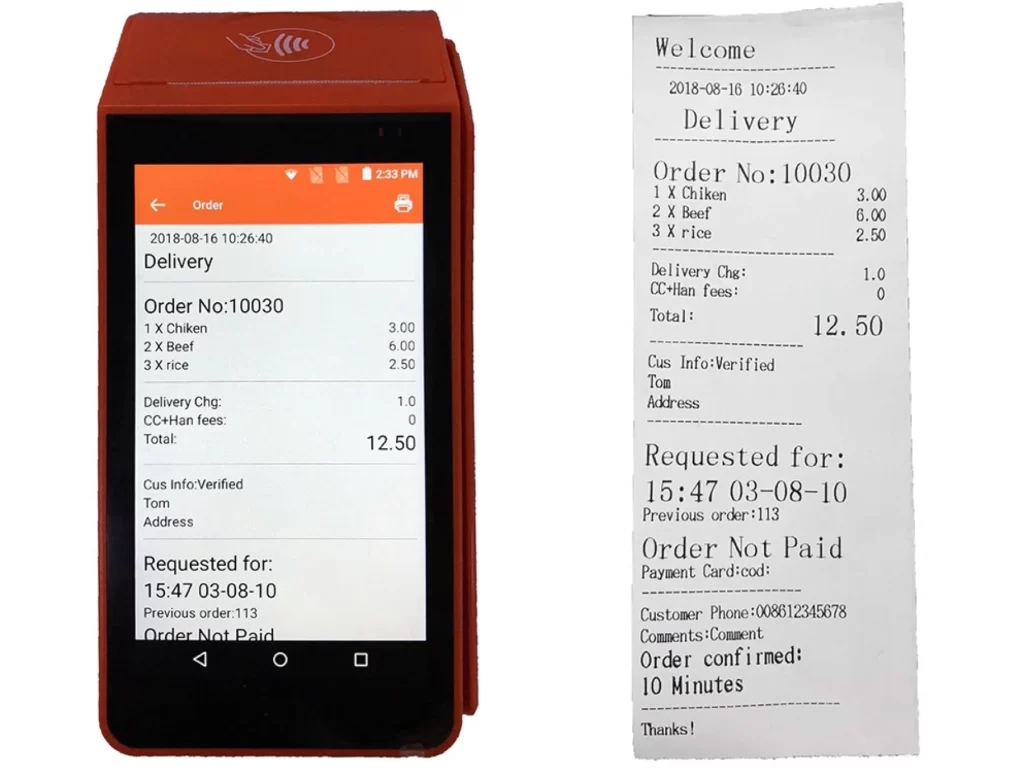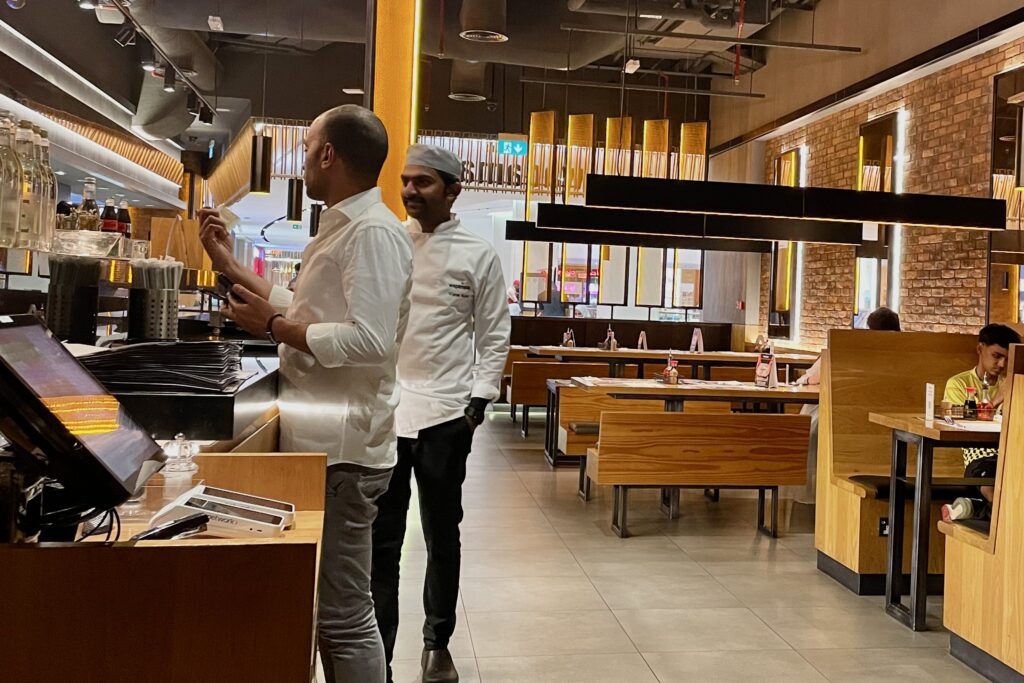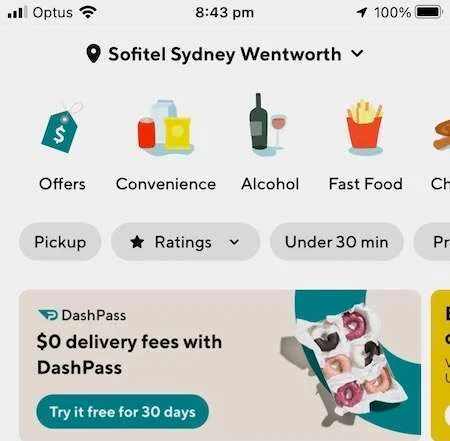Smartphones and food choices. Does not sound appetising does it?
Smartphones, cool apps, high technology and retail food consumption have come together. In an unexpected way. My guess is that we like it. The first significant indication of this trend is the stream of food courier entering and exiting food outlets.
It can be a restaurant, a small eateries or even a cafe that serves coffee and cakes. You notice it while dining there or picking up a snack.
They come in bicycles, motorcycles, cars and vans. All with their obligatory thermal bags as well as their colourful uniforms. Branding has began.
Food takeaway and delivery has existed in Australian suburbs for yonks. But this is different – technology drives this. Its the way that it is now done. A paradigm shift.
It was not the case in the big cities where restaurants catered only in-dining. Any takeaway was the remainder of the meal, incidental and used to be called doggy bag. .

The old to new
The old delivery model still remains but at a smaller scale. Many of us still do the phone order followed by the self pick-up. Our neighbourhood suburbs Chinese takeaways come to mind. A sense of communal belonging I suppose. .
This new paradigm, a subset of the new and fast evolving Gig Economy is app based.
Popular brand names such as Menulog, Uber Eats, Deliveroo, Doordash etc are entering our speech and text. First pioneered by the ride hailing industry, Uber in particular, it quickly forked in other directions and into new sectors.
Implication of this paradigm shift
There are a number of implications from this shift in food delivery.
The first is the intense competition among these new entrants. Secondly the entry of Tech firms in food of all places. Its the second that is game changer.
Competition always favours the end consumer. Though it is acknowledged that food consumers do pay extra for the convenience of delivery. That is offset by the choice and convenience of seeking a meal from the comfort of one’s home.
For small businesses in particular it widens their customer catchment area. There is less dependency on location and foot traffic. So the opportunity to move away from high rental zones is there to consider.
These new entrants have also helped these businesses to improve. It starts with tweaking their menus and how it is presented for ease of placing orders. This leads to increase in sales. Especially if the food is good.
For the end consumer, choices mean that they can pick the delivery company of choice. Partly based on past experience and partly because of enticing offers, teaser rates and discount and promotional vouchers . Some include loyalty points and free delivery.
Keen competition also pushes service standards.

Leading edge technology in play
If we look at the entry of tech firms, we need to look at the guts of this change.
The entire eco-sytem of this change is anchored on an app downloaded to a smartphone. It covers enrolment, authentication, menu design, order processing, payments and assignment of couriers. Thats lot of stuff done on the fly.
There is also the fixed cost of operating a high end contact centre to handle calls. These are when things go wrong and contact has to be made. It covers late and missed deliveries , cancellation, payment discrepancies, wrong orders, refunds and even when the food runs out.
The contact centre is a bonus to the economy as it is employment opportunity.
For the app to work, serious layers of high technology are applied. Best tech minds are recruited to re-architect, design workflows, incorporate latest payment platforms. Plus on-the-fly analytics and AI.
For every order placed and successfully delivered, I am sure someone in Sydney, Singapore or San Francisco did some of the heavy code work in that little app that resides on your phone.
Expect changes, good and bad
Monitoring behaviour of their delivery partners as well as customers has become integral to the model.
Customer spend patterns tell what menu items are popular. Demand peaks and drops during the day, week and during seasons. So do expect frequent changes in menu items, pricing or the way they are packaged and presented as they follow trends.
Like everything else change brings consequences. The rise of central kitchens is the most significant change from this phenomenon. Big and good enough to have their own post here.
These require capital and the entry of big business and venture captalists. This in turn poses a challenge and threat to small business operators. So what was a boon for food outlet operators especially the small ones, this new entry to the eco-system is more competition.

The rise of the smartphone
The smartphone is the key enabler. A survey in the US found that more than 90% of respondents would return home to pick up their forgotten smartphones. But a lesser number would return if they forgot their wallets.
I guess the smartphone has slipped into our daily lives both at work and home.
Now back to the gig economy. For the first time, an individual who is keen to draw an income either as part-time or full-time courier does not need to send in a CV, get shortlisted for an interview or wait.
It is structured and fast. If you met the straightforward criteria, you were on your way to supplement your income. All done on the app. Unnecessary bureauracy for employment pushed aside. A welcome change for many.
It would be remiss of me not to mention the significant impact of Coronavirus on this new paradigm. Lockdowns were mitigated by this ready form of delivery and became essential for both businesses and consumers.
For many businesses it meant survival in period of great uncertainty. Without food delivery, many business would have floundered or even folded.
Without noticing it, my guess is many families the app based food deliveries have crept into their household’s weekly routine. Rather seamlessly and mainly with the younger generation.
And it has been good in the main. Smartphones and food coming together.
